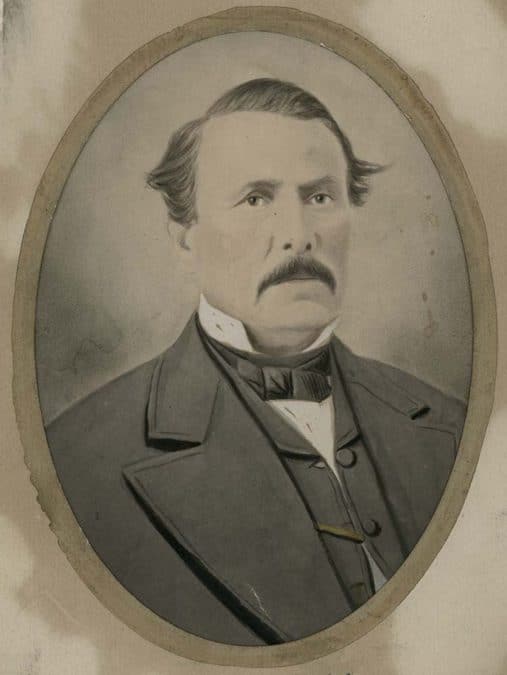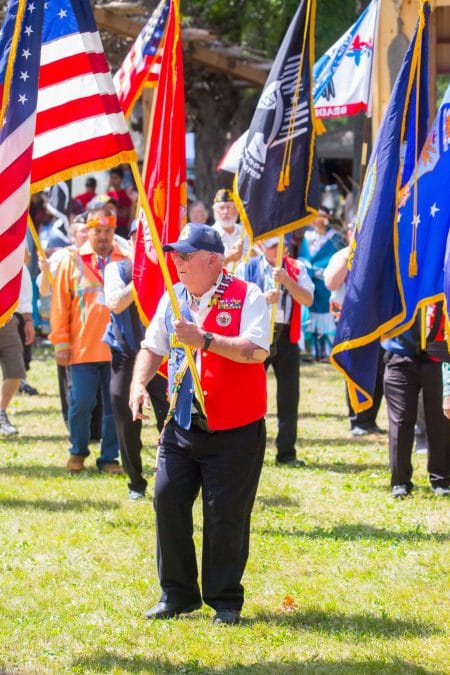The Citizen Potawatomi Nation Cultural Heritage Center provides resources to keep the Tribe’s history safe and accessible for generations to come. One key way the Nation does this is through the CHC’s archives. To highlight some of these holdings, the Hownikan is featuring photographs and family history of every founding Citizen Potawatomi family. If interested in assisting preservation efforts by providing copies of Citizen Potawatomi family photographs, documents and more, please contact the CHC at 405-878- 5830.
Arrival in North America
Like many French who came to North America in the 17th and 18th centuries, the Bourassa family played a role in the development of both the fur trade and French-Native American relations.
Francois Bourassa II became very active in the industry and married Marie Leber, tied to the well-known and successful LeBer family in Montreal. They had seven children: Francois, René, Marie Elisabeth, Francois Joachim, Charles-Joseph, Antoine and Susanne.

His son René carried the family tradition. In 1710, René married Agnés Gangnè. After her passing in 1719, he married Marie-Catherine Leriger in 1721. Between the two marriages, he had eight children: Marie Catherine, Agnes Francoise, Rene, Marie Renee Clement, Ignance, Amable, Francois Marie and Charlotte. Marie-Catherine and René became one of ten families that permanently lived within Fort Michilimackinac in northern Michigan. The fort served as a key trade post in the Great Lakes region near many Nishnabé communities.
Rene Celement II and Ignance continued the family business. Rene II married Anne-Charlotte Chevalier, and they had four children: Charlotte, Daniel, Charles and Agnes. Records indicate Rene lived near Niles, Michigan, before eventually relocating the family to Detroit in 1792 where he died at 74.
Daniel arrived in Detroit at the age of 13. In 1786, he married Marguerite Bertrand, daughter of Joseph Laurent and Marie Therese Bertrand. Before they wed, Daniel had a daughter named Madeline with an unknown Native American woman. Madeline married Joseph Bertrand, Sr., and a park in Berrien County, Michigan, bears her name.
Daniel I and Marguerite had 14 children: Daniel II, Marguerite, Archange, Jean Baptiste, Marie Judith, Michel, Alexandre I, Eloy, Alexandre II, Leon, Madeline, Agatha, Theresa and Amable.
Daniel Bourassa II was born at Michilimackinac in 1780. He married a Chippewa/Ottawa woman named Aranwaiske, English name Theotis Pisange. She was the niece of Chief Shabbona, and they settled near the Yellow River in Indiana. Together, they had 12 children: Joseph Napoleon, Mark, Jude, Lazarus, Stephen, Gabriel, Eloy, Alexander, Daniel III, Jaques, Elizabeth, and one child that passed away.
Daniel II, Theotis and seven of their children lived outside of Potawatomi Chief Menominee’s village in northern Indiana in the late 1830s. As a result, they were forcibly removed on the Trail of Death in 1838. Records indicate Daniel II was an honest and respected man within the community. He became the first to sign the Muster Roll, which was a type of census taken before the 660-mile forced march west began.
Their son Joseph Napoleon removed a year prior to the Trail of Death. Jude went to court attesting that he had rights to remain in Indiana in 1837 but was unsuccessful. Jude left the Great Lakes region on Aug. 17, 1840.
In their youth, Joseph and Jude received educations from the Baptist Theological Institute in Hamilton, New York, as well as the Choctaw Academy in Kentucky. Joseph became known as “Bourassa the Interpreter” for his translation and negotiation skills. He also served as an educator and doctor, compiling traditional Potawatomi medicinal recipes and a Potawatomi dictionary. Both brothers were signatories on the Treaty of 1846.

Before removal west, Jude married Marie Catherine Charet in 1833. They had numerous children: Theodore Santana, Adelaide, Louise, Mary Eleanore, Helena, Eulalia, Isabella, Stephen, Eugene, Basil, Theodosia, Daniel, Jude, Jacob and Helena.
Jude eventually established a grist mill on the Potawatomi Reservation near the mouth of Mill Creek, a Kansas River tributary. His daughter Isabella entertained visitors on one of the only pianos in the territory. Sadly, Joseph and Jude’s parents and many siblings passed away within the first few years after the Trail of Death. In the mid to late 1850s, Jude walked on due to smallpox.
Joseph and his first wife Memetikosiwike married in 1838. After her death, he married MahNees. His third wife, Mary L. Nadeau, died in 1872, and he then married Elizabeth Curlyhead. He had eight children between the four marriages: Joseph, adopted daughter Mary McDowell, Josephine R., Joseph B., May T. L., James E., Mary Lucille and Joseph Napoleon Jr.
Potawatomi leaders, including Joseph, signed the Treaty of 1861 that granted members allotments and the opportunity to become U.S. citizens. Like many agreements made with the federal government, this treaty had negative consequences for the Potawatomi people. Instead of upholding the grace period on taxation, Potawatomi lost most of their allotments due to failure to pay taxes.
Joseph wrote in 1866 about the white encroachment: “It seems to me the course taken in settling our affairs, being so slow, is in breaking the law.”
After the Treaty of 1867, most of Jude and Joseph’s children began moving to present-day Oklahoma, while some remained in Kansas. Many took allotments on the southern portion of the reservation. Joseph remained in Kansas and passed away in 1877. Today, Bourassa descendants across the world keep the family traditions of leadership and service to community alive for generations to come.
If interested in helping preserve Citizen Potawatomi history and culture by providing copies of family photographs, documents and more, contact the Cultural Heritage Center at 405-878- 5830.
